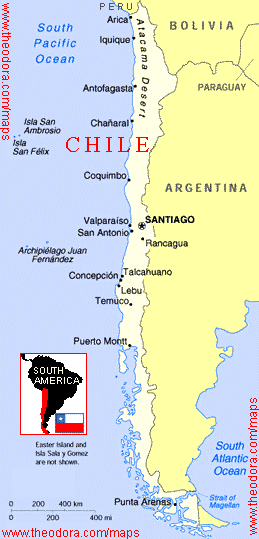|
So that’s it in a nutshell. Our party was six:
--David and Gloria Butler
--Mark Wagner and Monica Popejoy
--Tom Palmer
--myself.
Equipment included: Two ten-inch Dobsonians (Mark and
Tom), my 13” Dob, and a five-inch Mak on a Celestron ‘goto’ mount (David).
All three Dobs were collapsible, airline portable, designed and manufactured
by their owners. David arranged to rent a nine-passenger van (a diesel Kia)
to haul us and our equipment around (everything fit!).
We arranged our own flights to and from Chile;
specifically, to our initial meeting point at a travelers hotel (El Punto,
see links below) in La
Serena, a small, historic, coastal city about 400 kilometers (250 miles)
north of Santiago; our ‘jumping-off’ point for visiting the major
observatories and doing our own observing.
Our itinerary included:
- Day One: Settle in and meet in La Serena. Observing
from the courtyard.
- Day Two: Lunch with local astronomy educator and
advocate David Orellana. Observe at local observatory: Andacollo.
- Day Three: Observing at La Silla airport (private
airport of the European Southern Observatory—no longer used).
- Day Four: Tour of ESO at La Silla.
- Day Five: Travel to Vicuña; observing near Vicuña.
- Day Six: Visit Cerro Tololo and SOAR (state of the
art!) observatories. Observe at local "eco-tourist" observatory: Mamalluca
(clouded out!)
- Day Seven: Travel to La Frontera Resort (an Astronomy Inn) near Alcohuaz. Observe.
- Day Eight: Observe again from La Frontera (plus
daytime activities).
- Day Nine: Ditto.
- Day Ten: Ditto.
- Day Eleven: Ditto.
- Day Twelve: Drive back to La Serena.
- Day Thirteen: Some return to Santiago, fly out;
others have another day to explore La Serena.
- Day Fourteen: The remainder of us return to
Santiago, fly home.
Chile, it turns out, is populated with the friendliest people on this
planet! Beautiful smiles; beautiful spirits. Yes, the government is stable.
Chile's economy is the healthiest in South America. Despite the language
barrier, any Westerner should feel comfortable with the infrastructure--this
is a Western country, after all. Driving on the well-kept roads was
no problem. David bought a cell phone ($50) to help us--I mean Gloria--call
ahead. Internet cafés are not difficult
to find; nor are ATM machines. As mentioned earlier, the bus system is
comfortable, excellent and cheap! (My seven hour trip from La Serena to
Santiago cost me the equivalent of six dollars, and that included lunch and
DVD movie entertainment!)
Once out of Santiago, the country seems under-populated--but then I come
from the Bay Area! Where we were, it was very dry: Cities, villages,
towns, farming communities, only sprout up near streams fed by the
magnificent Andes. Weather was extremely pleasant--I always wore shorts in
the daytime, and often wore them while observing, too.
Food was good (especially the gourmet meals we were served at La Frontera
Resort), but you won't find any spicy items on the menus in this
place called Chile! . . .Bring your own Tabasco sauce, if this is
what you crave. . . Coffee, or rather "real" coffee (French press, usually)
is hard to find, too. Chilenos drink tea: you get Nescafé
instant.
Local brew is fine, but local wine is fabulous! Especially Pisco, an
80-proof brandy produced (locally) in the Elqui Valley. In fact, the
national drink is Pisco Sour, a margarita-tasting concoction made of
lime juice, egg white, crushed ice, and Pisco.
You can do your own shopping for food: the markets are well-stocked. In
La Serena, we went to a modern supermarket with 58 check-out counters!
Avocados and tomatoes were the best I've ever tasted. Next door, there was
an equally huge Home Depot-like store. . . Not only was there
reserved parking for the physically challenged, but there were spaces
reserved for pregnant women too! That is how civilized this country is.
Should you haul your own telescope down here? I did, and would again.
Airport security was no problem (carrying photos of the disassembled--and
assembled--scope helps). Land transport was no problem, either: You
get off the plane, use a cart to the sidewalk, take a taxi to the bus
station, take a bus to La Serena, take a taxi to the hotel. . . In other
words, your scope is being wheeled around for you, there is very little
lifting/lugging. But, I suppose you don't have to lug a scope to Chile:
There are at least three different well-equipped local "eco-tourist"
observatories that you could tour/use while using La Serena or Vicuña as
your base. Bring a Southern Hemisphere Planisphere (or a Sky and
Telescope chart), binos, red light, green laser (this impresses the
staff!), and you're set!
Well, pictures say more than . . .
(most taken by Tom Palmer)
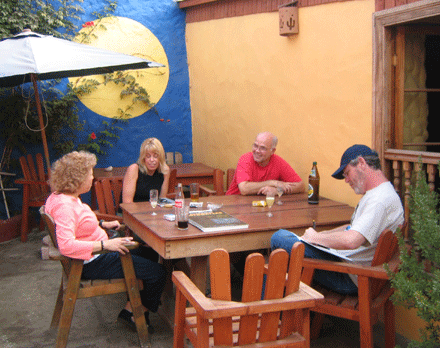
Gloria, Monica, myself, Mark at El Punto Hostel, La Serena.
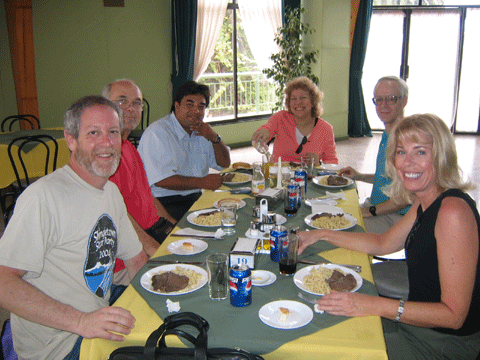
Lunch with David Orellana. Mark, myself, David O., Gloria and David Butler,
and Monica. Only Tom Palmer is missing--guess who took this picture?
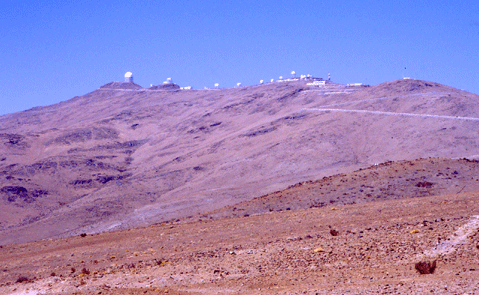
Approaching the European Southern Observatory at La Silla.
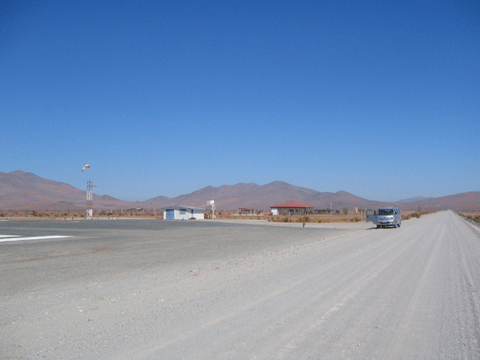
The famed "airport at La Silla"--the BEST observing ever!
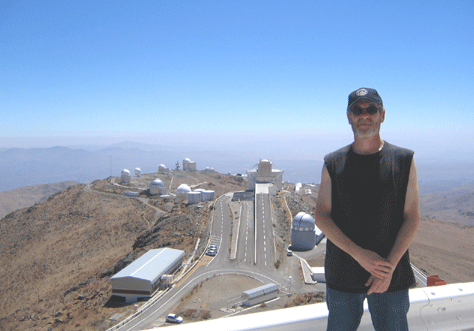
Mark at La Silla.
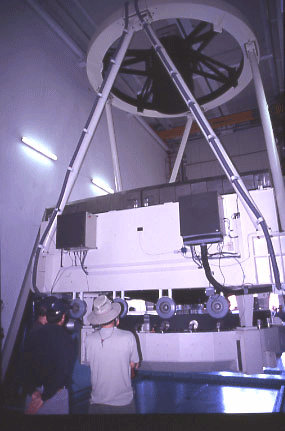
NTT scope, La Silla.
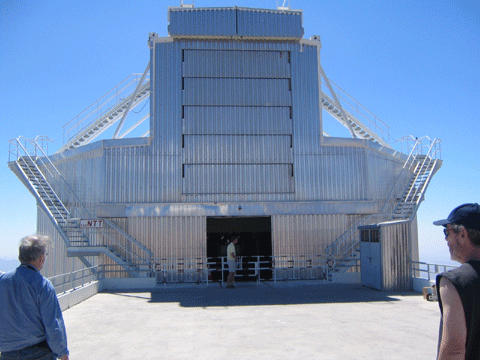
NTT exterior, La Silla.
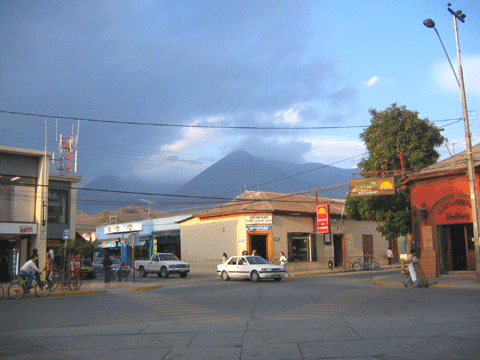
Vicuña.
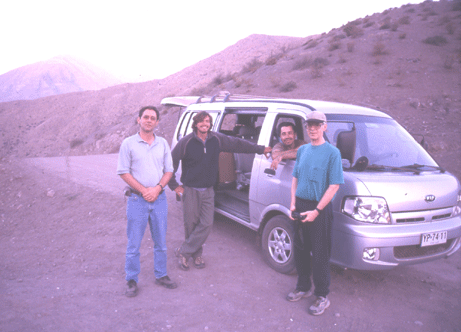
Vicuña site with guides and our rental van.
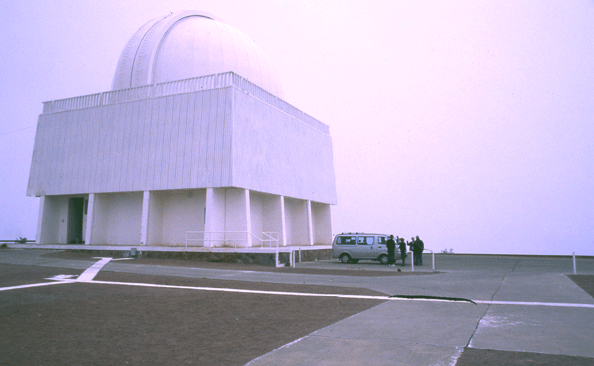
Visiting Cerro Tololo.
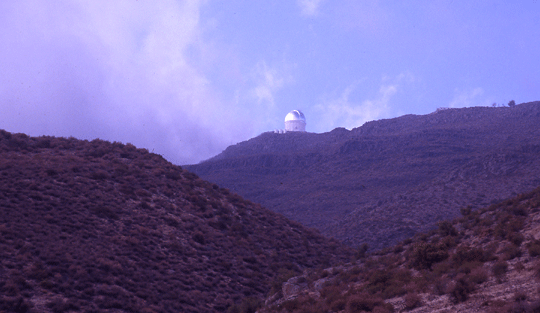
Cerro Tololo.
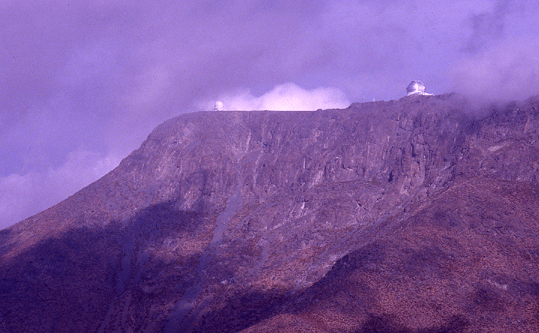
SOAR (awesome!) and Gemini at Cerro Tololo.
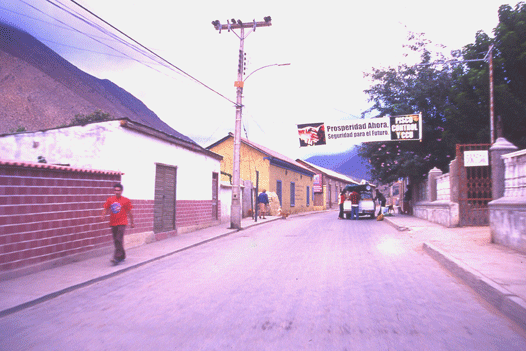
Road to Alcohuaz (La Frontera Inn).
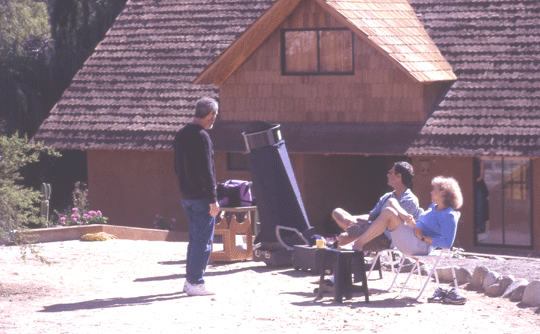
La Frontera.
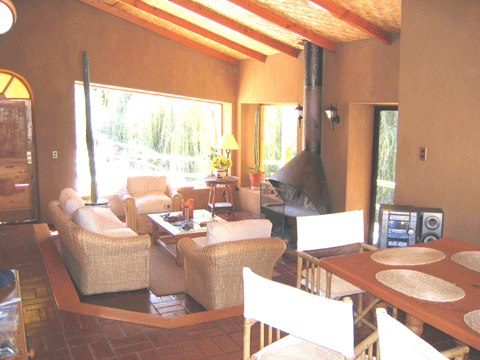
Mark and Monica's "cabin."
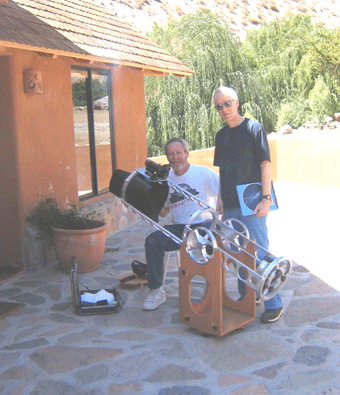
Mark and David with Mark's 10-incher.
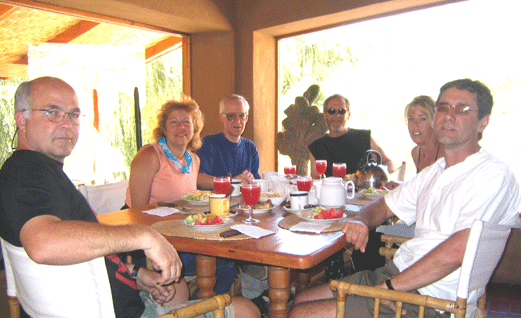
Breakfast at La Frontera.
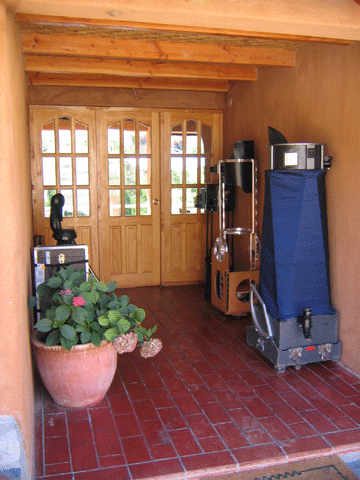
Awaiting nightfall.
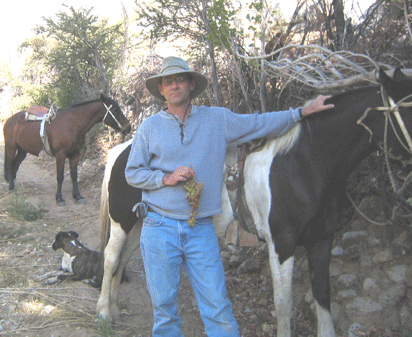
Tom with horse and grapes.
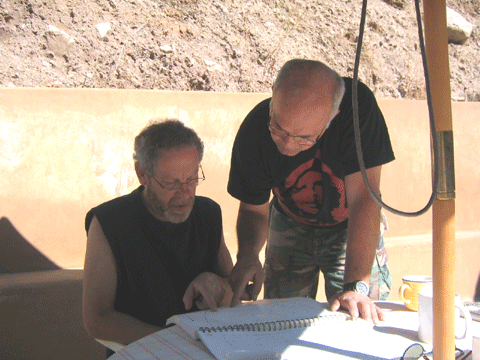
Preparing for the night.
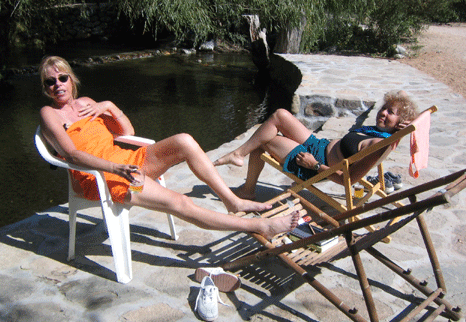
The girls' daytime activity, La Frontera.
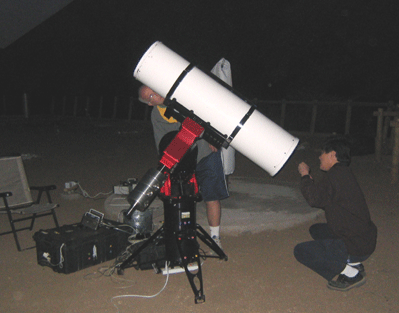
Helping Loke Tan collimate.
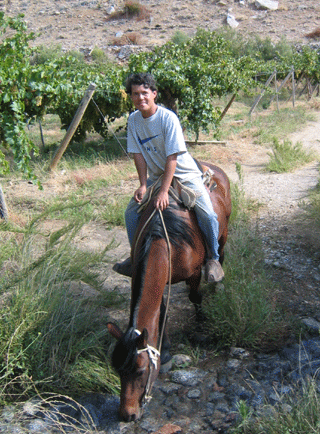
Our friend, Maona.
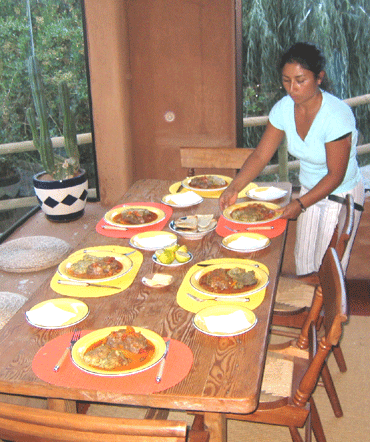
Our personal gourmet chef at La Frontera, Cecelia.
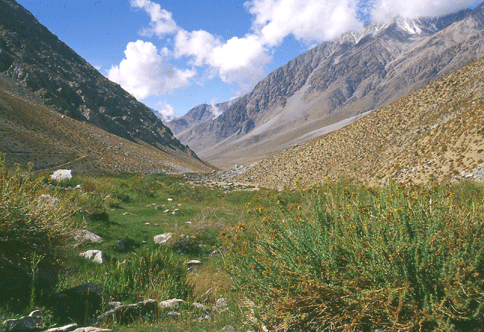
Andean valley (fishing trip).
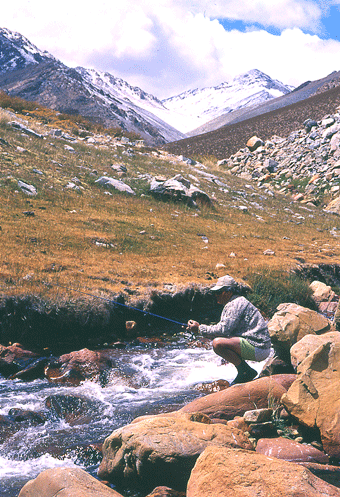
Marco (owner of La Frontera) fishing in an Andean stream.
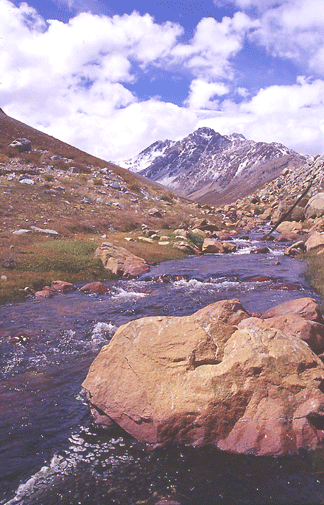
High Andes (fishing trip).
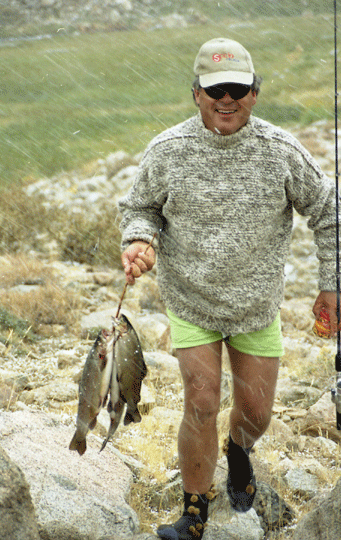
Success! (That's snow coming down.)
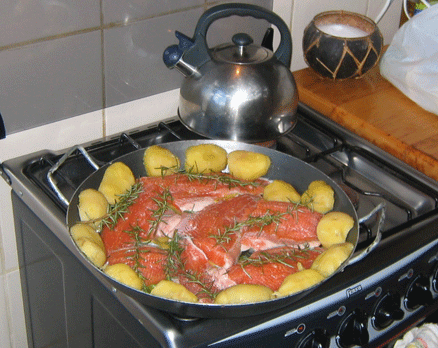
Our fishfry dinner!
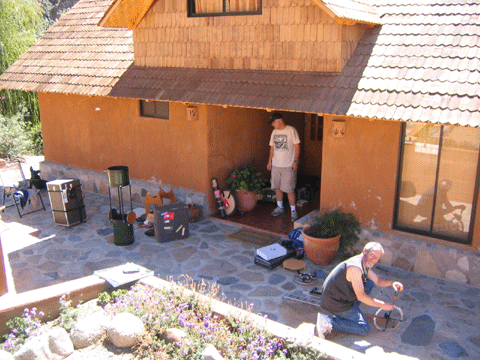
Packing up, La Frontera.
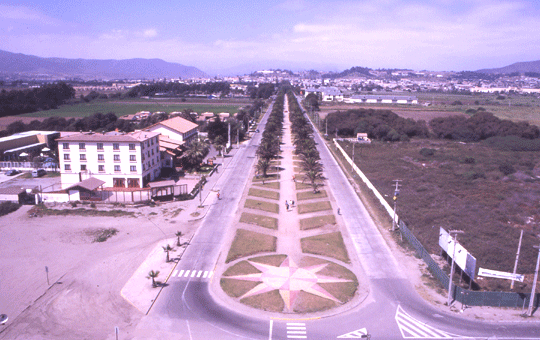
Back in La Serena (from the lighthouse).
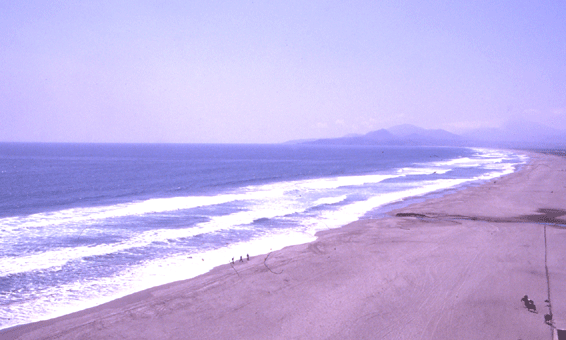
The beach from El Faro (the lighthouse), La Serena.

The bus to Santiago.
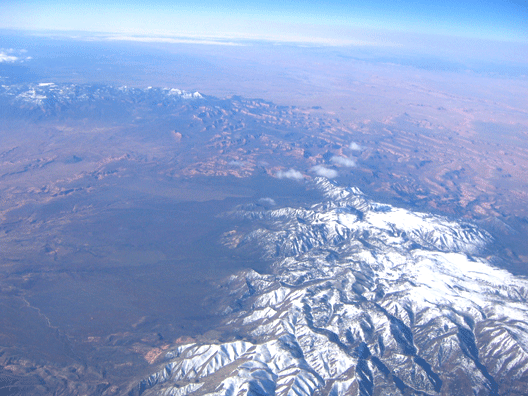
. . .Zzzzz . . .
Links to helpful sites/information:
--David Butler's
Chile-Travel-Astronomy Yahoo! Group.
--Tony
Flanders' "Practical Aspects of Observing in Chile."
--Hostel El Punto, La Serena
Chile. (Owned by a German couple--they speak English--highly
recommended!).
--La Frontera Resort. An
Astronomy-friendly place, to say the least! (Site is in Spanish.)
--Astrophotographer
Loke Tan's site.
(Many images taken from La Frontera.)
--Cerro Tololo Observatory.
--European Southern Observatory, La Silla.
--Mamalluca Observatory.
(Eco-tourism).
--Collowara Observatory
(Eco-tourism).
--Cochiguaz Observatory (Eco-tourism--Not yet open April, 2005: do a
"search.").
--My Observing
Notes from Chile.
--Atacama Lodge
(astronomy inn)
--Astronomy in
Chile (Wikipedia)
HOME
|
